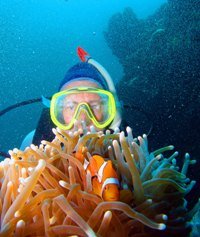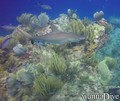This is an interactive map! Use controls to pan and zoom this map.
Access
|
English (Translate this text in English): South of Great bay. The site is equipped with mooring buoys. This dive site is part of the St Maarten Marine Park. You need to have a valid dive tag to be diving on this site. (see www.naturefoundationsxm.org)
English (Translate this text in English): South of Great bay. The site is equipped with mooring buoys. This dive site is part of the St Maarten Marine Park. You need to have a valid dive tag to be diving on this site. (see www.naturefoundationsxm.org)
South of Great bay. The site is equipped with mooring buoys. This dive site is part of the St Maarten Marine Park. You need to have a valid dive tag to be diving on this site. (see www.naturefoundationsxm.org)
English (Translate this text in English): South of Great bay. The site is equipped with mooring buoys. This dive site is part of the St Maarten Marine Park. You need to have a valid dive tag to be diving on this site. (see www.naturefoundationsxm.org)
English (Translate this text in English): South of Great bay. The site is equipped with mooring buoys. This dive site is part of the St Maarten Marine Park. You need to have a valid dive tag to be diving on this site. (see www.naturefoundationsxm.org)
English (Translate this text in English): South of Great bay. The site is equipped with mooring buoys. This dive site is part of the St Maarten Marine Park. You need to have a valid dive tag to be diving on this site. (see www.naturefoundationsxm.org)
English (Translate this text in English): South of Great bay. The site is equipped with mooring buoys. This dive site is part of the St Maarten Marine Park. You need to have a valid dive tag to be diving on this site. (see www.naturefoundationsxm.org)
English (Translate this text in English): South of Great bay. The site is equipped with mooring buoys. This dive site is part of the St Maarten Marine Park. You need to have a valid dive tag to be diving on this site. (see www.naturefoundationsxm.org)
English (Translate this text in English): South of Great bay. The site is equipped with mooring buoys. This dive site is part of the St Maarten Marine Park. You need to have a valid dive tag to be diving on this site. (see www.naturefoundationsxm.org)
How? By boat
Distance Short boat time (< 10min)
Easy to find? Easy to find
|
|
Dive site Characteristics
Alternative name Jason
Average depth 6.1 m / 20 ft
Max depth 13.7 m / 44.9 ft
Current None
Visibility Good ( 10 - 30 m)
Quality
Dive site quality Great
Experience All divers
Bio interest Interesting
More details
Week crowd
Week-end crowd
Dive type
- Wreck
- Sharks
- Reef
Dive site activities
- Photography
Dangers
Additional Information
English (Translate this text in English): Dutch frigate, originally named the Jason, launched in 1770. In 1796, the crew mutinied and handed the ship over to the British, who renamed the ship HMS Proselyte. In September of 1801, on a trip from St Kitts to St Martin, the ship struck the Man O War Shoals and sank. All of the crew were rescued, however.
You can still see a couple of large anchors, some cannons and other heavily encrusted objects on the sea floor, right below the current mooring. Plenty of wildlife in around the reef. If you're lucky you may even encounter one or two Caribbean Reef sharks prowling the canyons.
English (Translate this text in English): Dutch frigate, originally named the Jason, launched in 1770. In 1796, the crew mutinied and handed the ship over to the British, who renamed the ship HMS Proselyte. In September of 1801, on a trip from St Kitts to St Martin, the ship struck the Man O War Shoals and sank. All of the crew were rescued, however.
You can still see a couple of large anchors, some cannons and other heavily encrusted objects on the sea floor, right below the current mooring. Plenty of wildlife in around the reef. If you're lucky you may even encounter one or two Caribbean Reef sharks prowling the canyons.
Dutch frigate, originally named the Jason, launched in 1770. In 1796, the crew mutinied and handed the ship over to the British, who renamed the ship HMS Proselyte. In September of 1801, on a trip from St Kitts to St Martin, the ship struck the Man O War Shoals and sank. All of the crew were rescued, however.
You can still see a couple of large anchors, some cannons and other heavily encrusted objects on the sea floor, right below the current mooring. Plenty of wildlife in around the reef. If you're lucky you may even encounter one or two Caribbean Reef sharks prowling the canyons.
English (Translate this text in English): Dutch frigate, originally named the Jason, launched in 1770. In 1796, the crew mutinied and handed the ship over to the British, who renamed the ship HMS Proselyte. In September of 1801, on a trip from St Kitts to St Martin, the ship struck the Man O War Shoals and sank. All of the crew were rescued, however.
You can still see a couple of large anchors, some cannons and other heavily encrusted objects on the sea floor, right below the current mooring. Plenty of wildlife in around the reef. If you're lucky you may even encounter one or two Caribbean Reef sharks prowling the canyons.
English (Translate this text in English): Dutch frigate, originally named the Jason, launched in 1770. In 1796, the crew mutinied and handed the ship over to the British, who renamed the ship HMS Proselyte. In September of 1801, on a trip from St Kitts to St Martin, the ship struck the Man O War Shoals and sank. All of the crew were rescued, however.
You can still see a couple of large anchors, some cannons and other heavily encrusted objects on the sea floor, right below the current mooring. Plenty of wildlife in around the reef. If you're lucky you may even encounter one or two Caribbean Reef sharks prowling the canyons.
English (Translate this text in English): Dutch frigate, originally named the Jason, launched in 1770. In 1796, the crew mutinied and handed the ship over to the British, who renamed the ship HMS Proselyte. In September of 1801, on a trip from St Kitts to St Martin, the ship struck the Man O War Shoals and sank. All of the crew were rescued, however.
You can still see a couple of large anchors, some cannons and other heavily encrusted objects on the sea floor, right below the current mooring. Plenty of wildlife in around the reef. If you're lucky you may even encounter one or two Caribbean Reef sharks prowling the canyons.
English (Translate this text in English): Dutch frigate, originally named the Jason, launched in 1770. In 1796, the crew mutinied and handed the ship over to the British, who renamed the ship HMS Proselyte. In September of 1801, on a trip from St Kitts to St Martin, the ship struck the Man O War Shoals and sank. All of the crew were rescued, however.
You can still see a couple of large anchors, some cannons and other heavily encrusted objects on the sea floor, right below the current mooring. Plenty of wildlife in around the reef. If you're lucky you may even encounter one or two Caribbean Reef sharks prowling the canyons.
English (Translate this text in English): Dutch frigate, originally named the Jason, launched in 1770. In 1796, the crew mutinied and handed the ship over to the British, who renamed the ship HMS Proselyte. In September of 1801, on a trip from St Kitts to St Martin, the ship struck the Man O War Shoals and sank. All of the crew were rescued, however.
You can still see a couple of large anchors, some cannons and other heavily encrusted objects on the sea floor, right below the current mooring. Plenty of wildlife in around the reef. If you're lucky you may even encounter one or two Caribbean Reef sharks prowling the canyons.
English (Translate this text in English): Dutch frigate, originally named the Jason, launched in 1770. In 1796, the crew mutinied and handed the ship over to the British, who renamed the ship HMS Proselyte. In September of 1801, on a trip from St Kitts to St Martin, the ship struck the Man O War Shoals and sank. All of the crew were rescued, however.
You can still see a couple of large anchors, some cannons and other heavily encrusted objects on the sea floor, right below the current mooring. Plenty of wildlife in around the reef. If you're lucky you may even encounter one or two Caribbean Reef sharks prowling the canyons.
 Dive logs
Dive logs
Show all (3)...

|
By
- Spotted 3 Caribbean Reef Sharks, loads of Fr. Grunt. Nice Spiny Lobster running across the sand between rock outcroppings.
More... |

|
By
-
first dive with Arden, had a blast, huge Green Sea Turtles, lobster, blue tang, parrotfish, stone fish;
this was an old dutch gunboat that broke apart on the reef in the late 1700s, the wood ship was all decayed, but the enormous cannons
More... |
|
 Comments
Comments
Please login to use this tool.
No account yet? Register first; it's free!
Show all (0)...
Be the first to comment this country
Errors, Feedback
You can edit this page to correct errors or add new information. If you have any problems regarding this page, Send us feedback.
 HMS Proselyte
HMS Proselyte Photos
Photos Dive logs
Dive logs Comments
Comments




